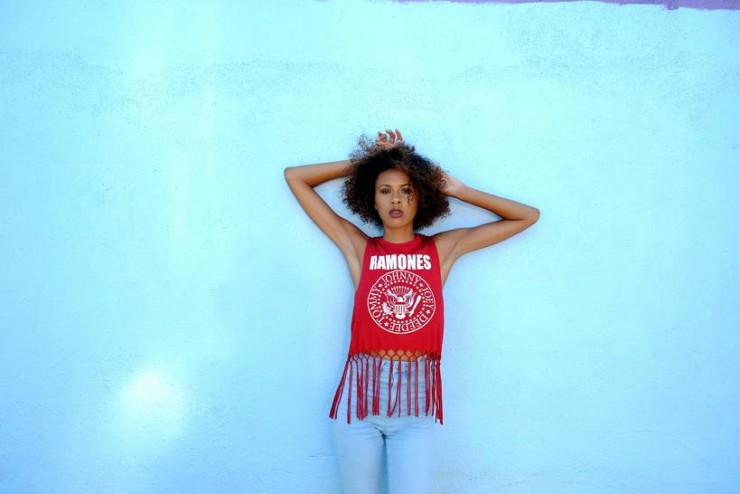5 Essential Tips for Designing Your Own Beachwear
Posted on 09 May 2024

Designing your own beachwear allows you to express your unique style and create garments perfectly tailored to your audience's personal taste and comfort. Whether they're planning to hit the beach, lounge by the pool, or enjoy a sunny day out, your custom beachwear not only stands out but also serves as a reflection of your brand's individuality.
In this post, we'll explore five essential tips for designing your own beachwear. These tips will help ensure that your custom creations are both stylish and functional, perfect for making a splash this summer.
Understand the Basics of Beachwear Fabric
When designing custom beachwear, the choice of fabric is crucial not only for the look but also for the comfort and functionality of the garment. Here are the key considerations when selecting the right material for your beachwear:
Material Options
- Polyester. This is a popular choice for beachwear due to its strong and durable nature. Polyester dries quickly, making it ideal for swimwear. It also holds colour well, ensuring that your designs remain vibrant after multiple washes.
- Nylon. Similar to polyester, nylon is quick-drying and exceptionally strong. It's slightly softer than polyester, offering a smoother feel against the skin, which many find comfortable for beach activities and shirts for summer events.
- Spandex. Often blended with either polyester or nylon, spandex provides elasticity. This is essential for swimwear, as it allows for a greater range of movement and a snug fit that maintains its shape even when wet.
Choosing the Right Fabric
- Print Compatibility. If your design includes custom prints, ensure the fabric can handle the type of printing you plan to use. One of the many benefits of screen printing is that it is the best process for consistently high-quality results across all fabrics.
- Comfort and Function. Consider the fabric's feel on the skin and its functional properties. For beachwear, it's important to select materials that are lightweight, breathable, and can withstand salt water and chlorine.
- Durability. Beach activities can be demanding on clothing. Choose fabrics that are resistant to wear and tear and will maintain their appearance over time.
By carefully selecting the fabric for your beachwear, you ensure that the final product is not only attractive but also practical for various beach activities. This foundation is essential for creating pieces that are loved and worn repeatedly, enhancing both style and comfort.
Choosing the Right Colors and Patterns
The colours and patterns you select for your beachwear play a significant role in both the aesthetic appeal and the practicality of the garment. Here's how to make informed choices:
Colour Selection
- Sun Resistance. Opt for colours that are less likely to fade under the sun. Dark and very bright colours can sometimes fade faster, so consider medium shades that maintain their vibrancy longer. FYI, at R&P Prints Canada, we use the latest screen printing inks that are resistant to fading and cracking.
- Visual Appeal. Choose colours that reflect the beach setting. Aquatic blues, sandy neutrals, and sunny yellows create a harmonious palette that complements the natural environment.
Pattern Considerations
- Complementing the Environment. Patterns that reflect the serenity or the vibrancy of the beach are always popular. Think about using designs like waves, palm leaves, or abstract sunbursts that resonate with the beach landscape but in unique ways.
- Personal Style. The pattern should also resonate with the wearer's personal style. Whether it's bold and large prints or subtle and small designs, the pattern should align with the wearer's preferences to ensure it feels personalized and unique.

Practical Tips for Pattern Placement
- Strategic Placement. Position patterns in a way that enhances the design of the beachwear. For example, larger patterns can be used on areas you wish to emphasize, while smaller patterns might be better suited for areas you want to visually minimize.
- Consistency in Design. Ensure that the patterns align at the seams of the garment. This attention to detail will result in a professionally finished product that looks seamless from any angle.
The right colours and patterns will not only increase the attractiveness of your beachwear but also ensure it performs well in a beach setting.
Incorporate Trends Wisely
Incorporating current trends into your beachwear designs can make them more appealing and relevant, but it's important to balance these with classic elements to ensure your pieces remain stylish over time. Here's how to effectively blend trends with timeless design:
Current Trends
- Research. Stay updated with the latest fashion trends by reviewing fashion shows, industry publications, and influencer content. Look for recurring themes in beachwear, such as cutouts, wrap-around styles, or specific prints like tropical leaves and florals.
- Selectivity. Choose one or two trend elements to incorporate into your designs. This prevents the piece from becoming outdated quickly and maintains a broader appeal.
Timeless Design
- Classic Cuts. While trendy elements can be eye-catching, foundational design elements should be classic. For example, tank tops have always been one of the more popular shirt styles and serve as a good base for adding trendy details.
- Functionality. Ensure that the design remains functional. Beachwear should be comfortable and suitable for volleyball and sunbathing. Avoid overly complicated designs that might compromise the garment's practical use.
Balancing Trends and Timelessness
- Subtlety in Trend Incorporation. Integrate trendy details subtly into the classic design. For example, add a trendy print as a trim or an accent, rather than on the main display area to keep the look fresh yet enduring.
- Versatility. Design pieces that can be easily mixed and matched. This allows wearers to update their look with new, trendy items without having to replace their entire beach wardrobe.
Placement and Sizing of Designs
The placement and sizing of designs on beachwear can significantly affect the overall look and feel of the garment. Here are some key considerations to ensure your designs are both attractive and flattering:
Design Placement
Consider how the placement of your design will impact the overall appearance of the garment. For instance, a design placed at the center of a longer t-shirt can draw attention to the torso, while a design along the hem or neckline might highlight those areas.
Sizing Considerations
- Proportionality. The size of the design should be proportional to the garment size. Remember, beachwear doesnèt have a lot of real estate to work with.
- Aesthetic Balance. Balance the size of the design with the amount of negative space on the garment. Too large a design can overwhelm the garment, whereas too small might not convey the intended impact.
Use software or sketches to visualize how a design will look on different sizes and styles of beachwear. This can help prevent issues with placement and scaling before production begins.
Working with a Professional Printer
To ensure that your custom beachwear designs look as good in person as they do on paper, partnering with a reliable professional printer is essential. Here are some factors to consider when choosing a screen printing service for your beachwear:
- Experience. Look for a printer with specific experience in producing beachwear. Their familiarity with different fabrics and the challenges of printing on stretchable materials will be crucial in achieving high-quality results.
- Quality of Previous Work. Request samples of previous work, especially pieces that involve materials and designs similar to what you plan to produce. This allows you to assess the clarity of prints, the quality of ink used, and the durability of the printing.
Communication and Collaboration
- Clear Specifications. Provide detailed information about your design requirements, including exact colours, sizes, and placement of logos or patterns. Clear communication prevents misunderstandings and ensures the final product meets your expectations.
- Feedback Loop. Establish a process for reviewing samples and providing feedback. A good screen printing service should be open to making adjustments based on your input to ensure the product aligns perfectly with your vision.
With the right professional screen printing service, you can ensure that your custom beachwear designs stand the test of time by being both visually appealing and durable. This partnership is key to turning your creative ideas into high-quality products that your customers will love and trust.
